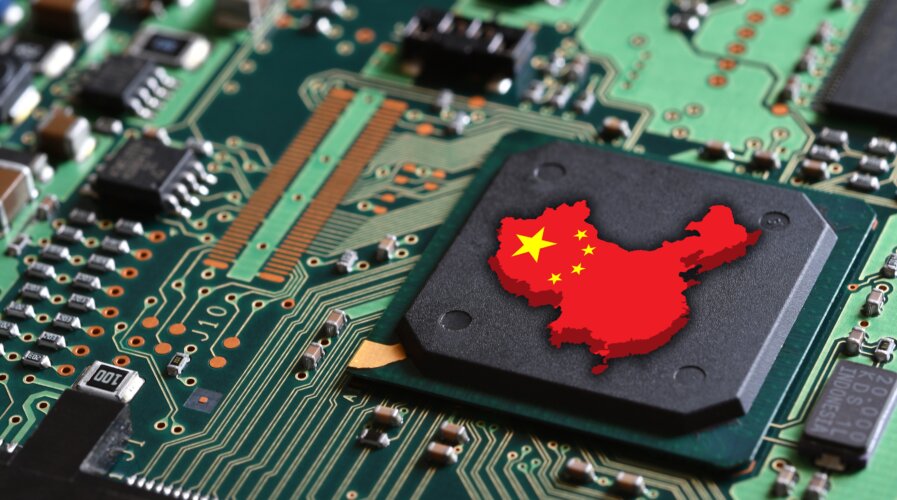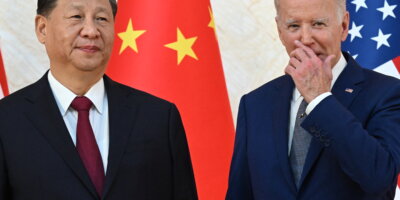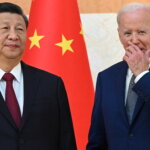
Do RISC-V restrictions signal the failure of the US export controls on China?Source: Shutterstock
Do RISC-V restrictions signal the failure of the US export controls on China?
- The US Commerce Department was urged to beef up the existing export controls by requiring any American person or company to get an export license before engaging with Chinese entities on RISC-V technology.
- Some US lawmakers want to put constraints on work by US companies on RISC-V by restricting collaboration with Chinese companies.
- Most experts and analysts are saying such moves would impede global innovation.
The US is seeing an increasing number of lawmakers expressing deep concern about the rapid technological advancements made by China. Many have begun questioning whether the export curbs imposed on China since last October are compelling – especially after Huawei’s latest 5G-enabled smartphone reflects significant technological strides and increased aggressiveness. One thing’s for sure is that the US wants to impede further; this time, they are targeting the RISC-V chip technology.
“We are trying to use every single tool at our disposal to deny the Chinese the ability to advance their technology in ways that can hurt us,” Commerce Secretary Gina Raimondo said after Huawei released the 5G-capable Mate 60 Pro during her visit to the country in late August. Raimondo, like other US lawmakers, has been emphasizing the importance of the US maintaining technological superiority and innovation.

Director of the National Science Foundation Sethuraman Panchanathan looks on as US Commerce Secretary Gina Raimondo testifies during the Senate Commerce, Science, and Transportation hearing to examine CHIPS and science implementation and oversight, on Capitol Hill in Washington, DC, on October 4, 2023. (Photo by SAUL LOEB / AFP)
Now, the US is considering restricting American companies from participating in RISC-V, an open-source chip design architecture that China is doubling down on to reduce dependence on foreign technologies. Two Republican House of Representatives committee chairmen, Republican Senator Marco Rubio and Democratic Senator Mark Warner – are urging Biden’s administration to take action soon, citing national security grounds.
The move came shortly after the Biden administration warned Beijing of its plans to update rules that curb shipments of AI chips and chip-making tools to China as soon as this month. The Commerce Department, which oversees export controls, is working on an update of export restrictions first released last year.
The update seeks to limit access to more chip-making tools in line with new Dutch and Japanese rules, other sources said, and to close some loopholes in export restrictions on artificial intelligence (AI) chips.
What is RISC-V, and why is it the center of the US-China tech war?
RISC-V pronounced as “risk five,” is an open standard Instruction Set Architecture (ISA) for computing that competes with costly proprietary technology from British semiconductor and software design company Arm Holdings. As a global standard, RISC-V is not controlled by any single company or country. Therefore, it has become a new hope for China to reduce its dependence on foreign intellectual property (IP) suppliers amid an escalating tech war with the US.
RISC-V can be a crucial ingredient for anything from a smartphone chip to advanced processors for artificial intelligence (AI). According to RISC-V International, the global non-profit home of the open standard RISC-V ISA, related specifications, and stakeholder community, the development of RISC-V specifications is based on contributions that have been made available on a non-proprietary basis or cultivated in the open from members evenly distributed in North America, Europe, and Asia.

Source: RISC-V’s X
“The only difference is that the marketplace can use these standards without proprietary licenses from a controlling company. Competition does not happen at the standards level. Still, rather competition is at the implementation level,” the organization said, adding that RISC-V has ushered in tremendous potential for companies worldwide to participate in the rapidly growing semiconductor space.
Experts and analysts have stood firmly by RISC-V, which has grown tremendously in global adoption and influence as the open computer standard. “The entire tech ecosystem benefits from standards being open, whether it’s RISC-V or other popular standards such Ethernet, HTTPS, JPEG, or USB,” Calista Redmond, chief of RISC-V International, said in a blog posting.
Unfortunately, US lawmakers, including Republican and Democratic Senators, are urging the Biden administration to take action on RISC-V on national security grounds, according to a Reuters report. The move marked the first time US politicians have considered restricting the tech standard.
China leads the RISC-V adoption
Despite its origins in 2010 at the University of California, RISC-V is overseen by a Swiss-based non-profit foundation coordinating efforts among for-profit companies to develop the technology. RISC-V has found favor in China as a potential means to navigate technology restrictions the US imposes.
This means having access to open standards allows companies, including those from China, to innovate faster and spend their time creating differentiated products rather than trying to reinvent the wheel. “Just as companies everywhere have adopted Ethernet, HTTPS, JPEG, and USB standards, we’re seeing a similar trend for RISC-V as an open standard. The flexibility, extensibility, and scalability of RISC-V give developers unparalleled design freedom,” Redmond stated.
This move aligns with commercial motivations, including cost reduction and diversification away from Arm, the British semiconductor design giant. Due to US regulations, Arm faces constraints on selling specific advanced intellectual properties to Chinese clients.
Similarly, US electronic design automation firm Synopsys can only offer a limited-function version of its software to Chinese companies like Huawei Technologies, as confirmed by a Synopsys engineer during a RISC-V event in Beijing earlier this year.
According to an article by the South China Morning Post (SCMP), Of the 21 premier members of RISC-V International, nearly half are Chinese, including Alibaba Cloud, Huawei, ZTE, and Tencent Holdings, according to the agency’s website.
“Meanwhile, China has set up a domestic RISC-V alliance. Nine Chinese chip companies – including Alibaba Group Holding’s chip unit T-Head and Shanghai-listed VeriSilicon Holdings – agreed in August to ally with the condition that members not sue each other over patent infringement.”
Citing Edward Wilford, senior principal analyst of IoT hardware at research company Omdia, SCMP reported that Chinese firms represent 60 to 80% of start-ups using RISC-V. In 2022, global shipments of RISC-V architecture chips exceeded 10 billion units, with half of them coming from China, according to data from RISC-V International.
“You can stop US firms in the RISC-V International from working with Chinese companies, but the collaboration built on RISC-V’s open-standard nature is out there. One can also turn to the internet for the instruction set,” said Wilford. However, the US sees it as Beijing exploiting a culture of open collaboration among American companies to advance its semiconductor industry.
“Communist China is developing open-source chip architecture to dodge our sanctions and grow its chip industry,” Rubio said in a statement to Reuters. “If we don’t broaden our export controls to include this threat, China will one day surpass us as the global leader in chip design.” The lawmakers are urging the Commerce Department to “require any American person or company to receive an export license prior to engaging with China entities on RISC-V technology.”
In China, executives from Huawei have embraced RISC-V as a pillar of that nation’s progress in developing its chips. The States and its allies also jumped on the technology, with chip giant Qualcomm Working with a group of European automotive firms on RISC-V chips, and Alphabet’s Google said it would make Android, the world’s most popular mobile operating system, work on RISC-V chips.
What’s next?
The dynamics of open standard is such that if Biden’s administration were to regulate US companies’ participation in the Swiss-based foundation in the manner lawmakers are seeking, it would complicate how American and Chinese companies work together on open technical standards.
Additionally, such measures could pose obstacles to China’s quest for self-reliance in chip manufacturing and hinder US and European endeavors to create cheaper and more versatile chips.
READ MORE
- Safer Automation: How Sophic and Firmus Succeeded in Malaysia with MDEC’s Support
- Privilege granted, not gained: Intelligent authorization for enhanced infrastructure productivity
- Low-Code produces the Proof-of-Possibilities
- New Wearables Enable Staff to Work Faster and Safer
- Experts weigh in on Oracle’s departure from adland


